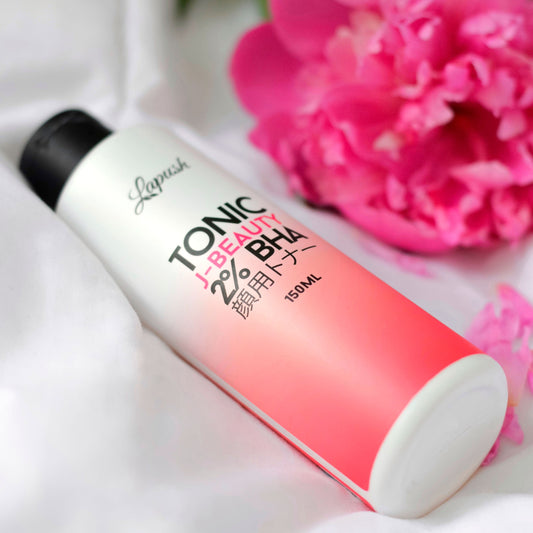
Do you need to wash off facial toner: dispelling myths
Facial toner is one of those products that raises a lot of questions. One of the most common is whether you need to wash off the toner after applying it. Some say that you should definitely wash it off, while others say that this is absolutely wrong. Who is right?
The correct answer depends on the type of tonic and its composition. In modern care, there are different formats of tonics: moisturizing, acidic, cleansing, soothing. And each of them has its own purpose and rules of application. It is important not only to know the purpose of the tonic, but also to understand how it works on the skin and in what cases it can cause harm.
What is a facial toner and why is it needed?
Toner is not just “water in a jar”. It is a product that completes the cleansing stage of the skin and prepares it for the next steps of care. Its main function is to restore the pH balance after washing, refresh the skin, remove the remnants of cleansing products and make it more receptive to serums and creams.
In addition, many modern facial toners perform not one, but several functions. They can moisturize, soothe, mattify, or even gently exfoliate the skin thanks to acids. The composition often includes aloe, hyaluronic acid, panthenol, niacinamide, herbal extracts, or fruit acids - it all depends on the purpose of the toner.
It should be remembered that toner is not micellar water or lotion, which may need to be washed off. Its texture is light, it is quickly absorbed and remains on the skin, acting as a preparatory stage before active products. But there are exceptions, and it is worth knowing about them.
When tonic does not need to be washed off
In most cases, toners are not washed off. When it comes to classic moisturizing, soothing or toning formulas, they are designed to stay on the skin and work throughout the day or night. By washing off such a toner, you are actually depriving yourself of the active effect of its beneficial components.
These toners are gentle, alcohol-free, and acid-free. They often contain soothing ingredients that help reduce sensitivity, restore skin after cleansing, and maintain moisture. They are usually applied with your hands or a cotton pad, and are completely absorbed within seconds.
Unless otherwise stated on the label, toners are left on the skin. They are great as a base for applying serums or creams, enhancing their effects. Moisturizing toners are especially useful for dry and sensitive skin that needs gentle care without rinsing.
When to wash off toner
There is an important exception: toners with active acids (AHA, BHA) or antiseptic formulas, especially those containing alcohol or salicylic acid. They can be effective in combating acne, oily sheen, or enlarged pores, but require caution.
Some of these toners have instructions on the packaging: "rinse after a few minutes" or "do not use daily." And if you do not do this, dryness, peeling, irritation or even disruption of the skin barrier may occur. If there are no such instructions, but you feel burning or tightness, it is better to wash off the toner with cool water or gently wipe the skin with thermal water or a sponge.
Acidic toners should not be left on the skin overnight without further care, especially if it is sensitive or damaged. Always be guided by the composition, manufacturer's recommendations and your own feelings after application.
What happens if you use toner incorrectly?
Using even a quality toner incorrectly can do more harm than good. For example, leaving an acidic or alcohol-based toner on your skin for a long time without moisturizing it can cause irritation, dryness, redness, and sometimes a rash.
Another common mistake is trying to replace a full cleanse with a toner. It’s worth remembering that a toner is a product to use after cleansing, not instead of it. It can’t completely remove makeup, sebum, or SPF, so applying it to unclean skin is useless and sometimes even harmful.
It is equally important not to overdo it with the amount. Excessive amounts of toner do not improve the effect, but can make the skin sticky, clog pores or reduce the effectiveness of subsequent products. In skin care, it is not the amount that is important, but the correct consistency and a balanced approach.
How to properly incorporate toner into your daily care
Toner is best applied immediately after washing - on dry or slightly damp skin. It is at this moment that the skin is most receptive to active ingredients, and tonic helps to better "implement" them. The optimal frequency is twice a day: in the morning after waking up and in the evening after cleansing.
You can apply the toner with a cotton pad, but it’s even better to do it with your fingers, using light movements. This is not only more economical, but also gentler on the skin. You can even apply a few pressure points, like a light massage — this activates microcirculation and helps the toner absorb better.
After the toner is absorbed, it is worth waiting a few seconds and moving on to the serum or cream. Do not rush to “seal” the skin immediately after application – let the formula work. This approach will make the care more effective, and the skin will be grateful.
Conclusion: Do you need to wash off facial toner?
In most cases, you don’t need to rinse off your toner. If you use moisturizing, toning, or soothing formulas, leave them on your skin. They are designed to work further and enhance the effects of the next steps of your skincare routine.
However, harsh toners with acids, alcohols, or antiseptic ingredients may require rinsing or a more cautious approach. Always read the instructions, pay attention to your skin's reaction, and remember: what works for one person may not work for another.
Toner is not a mandatory but very valuable element of care. If used correctly, it becomes a real helper in maintaining balance, freshness and comfort of the skin. And the answer is simple: in most cases, it is not necessary to wash it off - the main thing is that it is chosen for your skin type and correctly introduced into the routine.


















